Our driver, Wallace, is explaining to us that our bus is our canoe, or waka in Maori. The name of our waka is Kiwi. This is important to remember, he says, because if we don’t and we miss our canoe we must “walk-a” home. Wallace has got jokes, but he also has tons of instructions for us. He’s training us to become a good Maori family tribe, or iwi, before we reach the Tamaki Village, about 20 minutes outside Rotorua.
First, we must learn the proper greeting, “Kia Ora,” which means hello, but like “Aloha” for Hawaiians, it could also mean good-bye or maybe even answer the question, “Are you well?” according to Wallace. If someone greets you with Kia Ora, you should always say Kia Ora in return, it’s only polite. Then, we work through other basic terms like haka, which is the traditional dance of warriors that we’ll see, and hangi, the earth-oven-prepared feast that we are all looking forward to later.
Our waka is quite international with Germans, Mexicans, Indians, Swedish, Australians and Americans aboard and our journey together represents the journey that Maori, led by Polynesian explorer Kupe, made from their former home Hawaikinui, 1,000 years ago to search for a new land. Kupe called their new home, Aotearoa, or the Land of the Long White Cloud. As the legend goes he and his wife spotted the long cloud over the land and took it as a sign to stay.
Our journey ends with us standing around a dusty amphitheater. Our leader from Massachusetts bravely stepped forward to represent our canoe and now stands with other waka leaders to participate in a traditional ceremony called the “Powhiri,” a challenge, then welcoming of new tribes, followed by the hongi, a greeting where two people press their noses together to embrace the same life breath. Everyone was transfixed by the Powhiri and remained silent to respect the tradition. It looked like this:
(this looked way better in person and on my mac until i uploaded to youtube!)
After the real Tamaki villagers decided it was OK to welcome the new Tamaki villagers, we were invited into an otherworldly, seemingly enchanted forest where the trees enveloped us and warm fires flickered. Tamaki villagers showed us to different parts of their village to share their culture and customs. Tanya and I start at the house where the warriors, namely our waka leaders, must learn the haka and how to make the most fearsome face, complete with bulging eyes, protruding tongue and guttural grunts. Our waka leaders tried, but I was left mildly amused rather than scared.
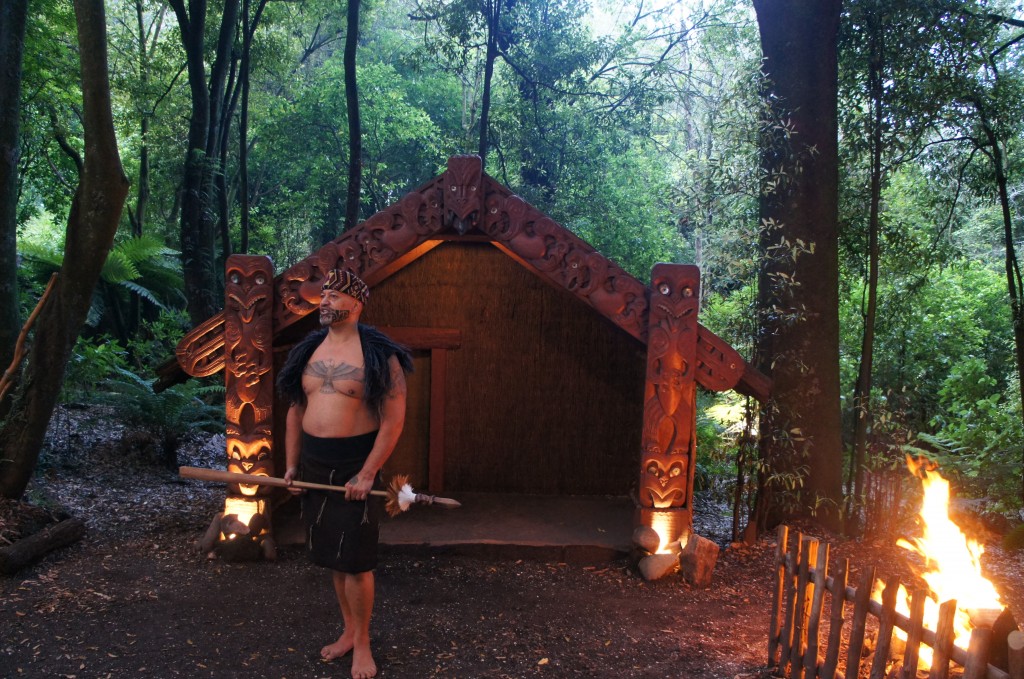
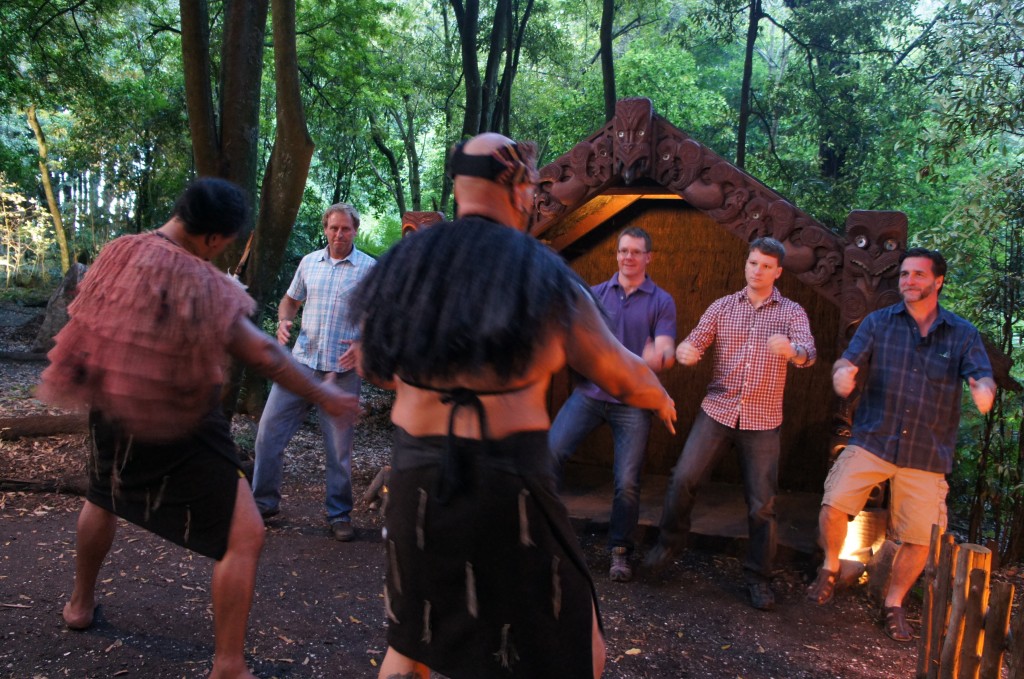
We continue through each home, experiencing Maori culture intimately amongst the trees. Tanya tries her hand at “poi,” a dance typically done by women that may have started as a way for men to train their wrists during battle. Women swing a soft ball, originally made from flax, on a piece of string of varying lengths in elaborate patterns. They make it look really easy. According to Tanya, looks can be deceiving. She said she had trouble controlling the ball, which can go flying if you swing too hard. I tried a children’s game called Ti Rakau that would eventually train them for better stick handling in battle. I stood in a circle with two other new villagers holding a stick and awaiting a call to move left or right, releasing our stick in time to jump and catch the stick next to you. If you miss you are out. It was an insane combination of musical chairs and “Simon Says.”
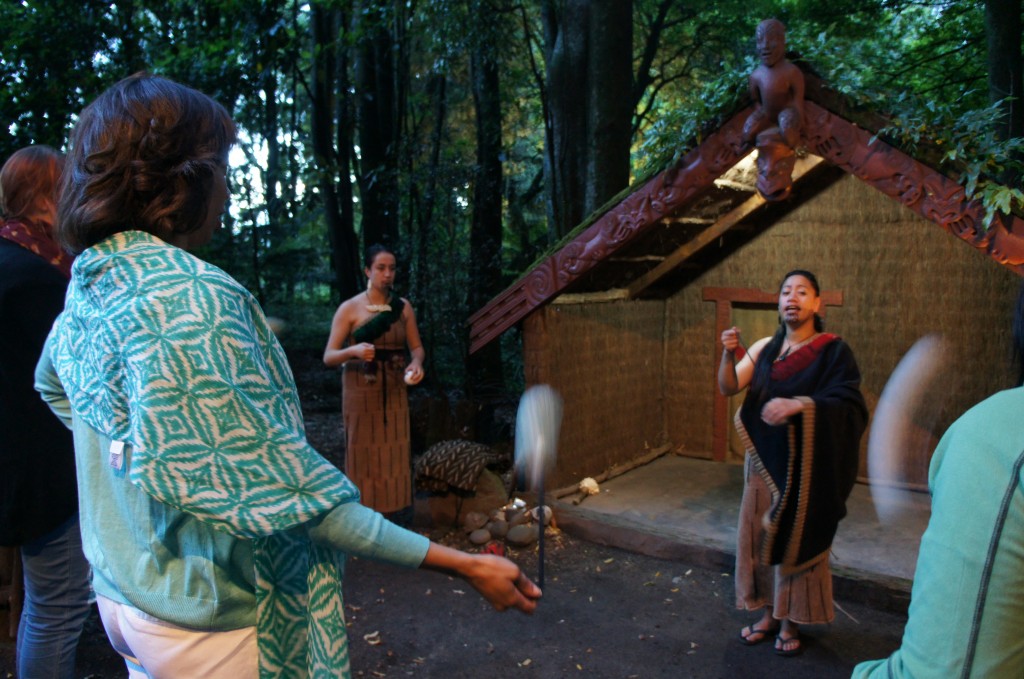
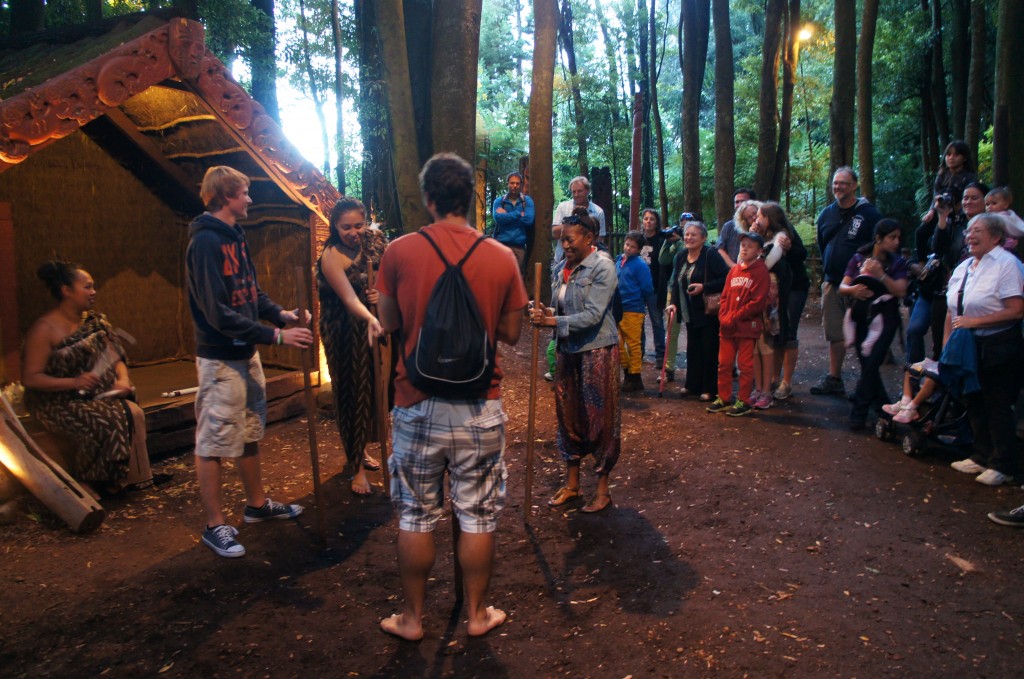
We had a pretty good explanation of Ta Moko, or the Maori face tattoos, from Awhitia the day before, but here we learned more about how the tattoos are created with a tool made of bone to scratch into the skin and another to inject the ink. The scars were created, allowed to heal and widened again and again. The Tamaki storyteller says many warriors died in the process, but it was considered honorable to do so. The tattoo was like their form of identification, it told their personal story of who they were and where they came from, and their carvings were another form of storytelling revealing legends and genealogy.
By now, we feel honored to be honorary Tamaki. We watch our hangi meal get hoisted from a smoky pit, layer by layer and our mouths water. But first we watch more performances in the wharenui, or meeting house. I tell Tanya that I am more impressed by this than a luau I attended in Hawaii last year. There’s something about this that feels personal. The same people that shared their Maori traditions and stories are now performing the songs and dances that their ancestors passed to them. It doesn’t feel like a big production, but rather a real, honest exchange of culture. It really does make us feel at home.
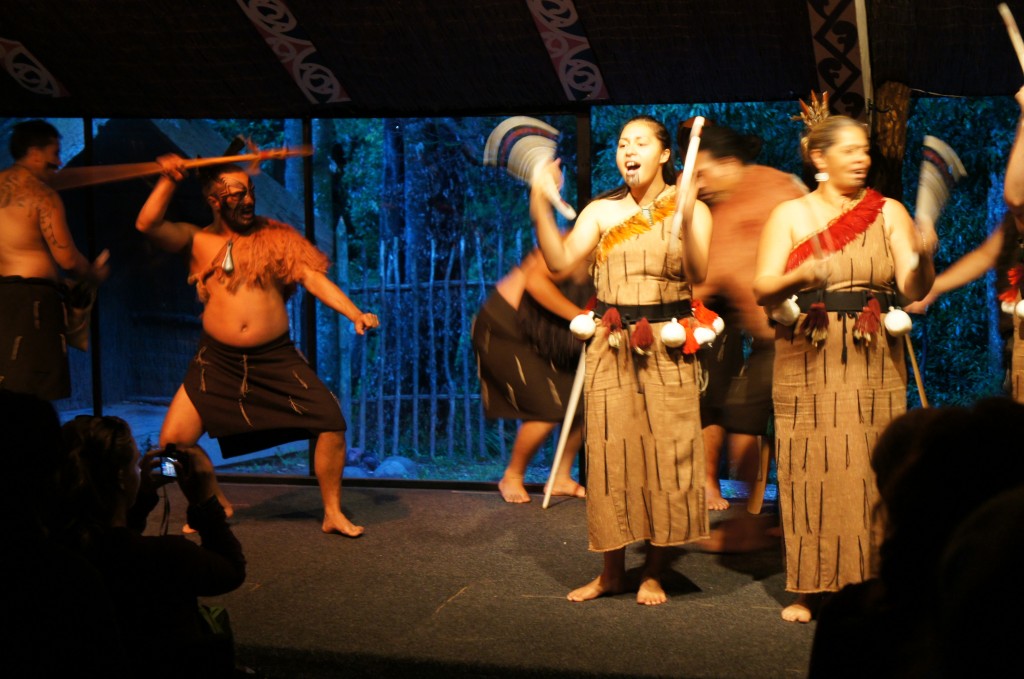
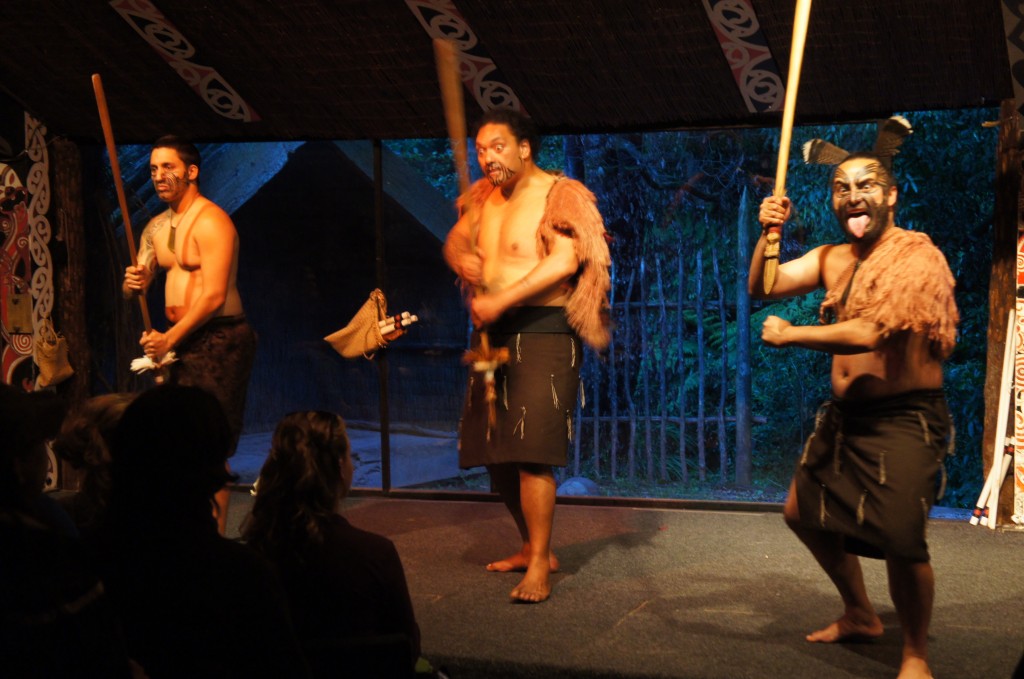
The hangi feast makes us feel even more at home. In fact, it reminds us of Thanksgiving. Everyone is heaping their plates with pork, chicken, sweet potatoes, potatoes, carrots, stuffing and I can’t even remember what else. I do remember the smoky flavor of those potatoes and the tenderness of the chicken. That was some good stick-to-your-ribs-eating. We also enjoyed the company of an Indian couple from Mumbai that was off the Queenstown the next day. Sadly, the wife was vegetarian and couldn’t enjoy much of the meal.
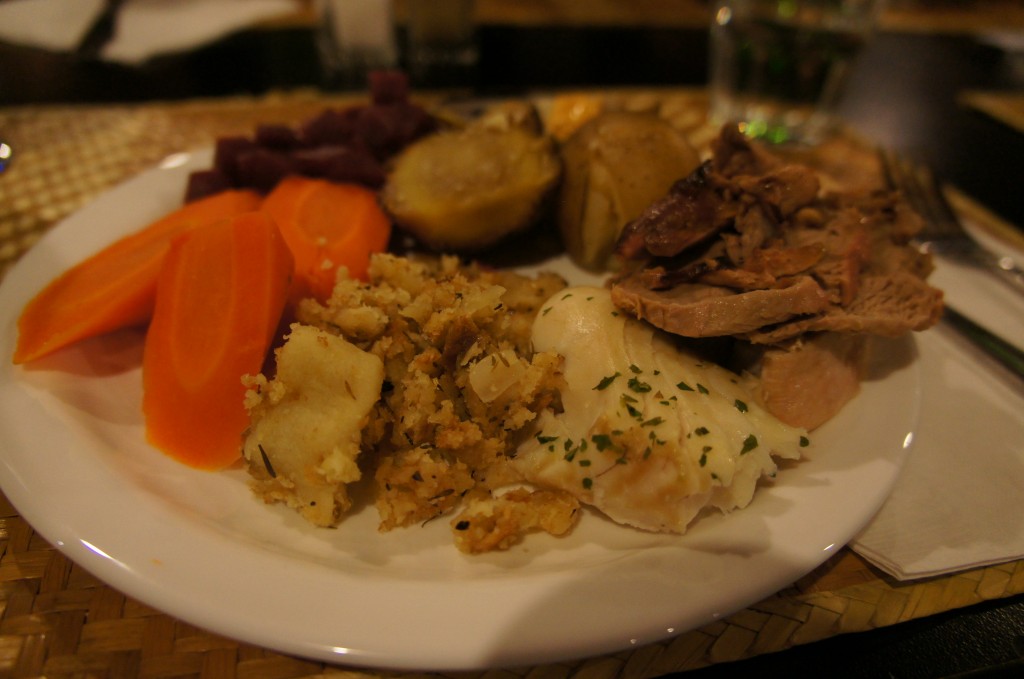
When we return to our waka, we feel like we’ve really bonded as an iwi. Wallace asks us to sing songs from our countries and Tanya leads in singing the Star-Spangled Banner, our Mexican family members sing “Cielito Lindo,” also known as the ay, ay, ay ay song, the Australians sing “Waltzing Mathilda” and all the others jump in with their traditional tunes. We love each rendition and cheer each other raucously and then Wallace ends with his own song, an American one, “She’ll be coming ‘round the mountain.” He sings as he whirls us around and around the Rotorua rotaries in our big white waka on the way back to our hotels.